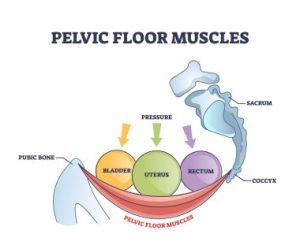
Hysterectomy Exercises After Surgery (4 Helpful Exercises)
Hysterectomy exercises after surgery play a crucial role in promoting post-operative recovery by aiding in abdominal strength and flexibility. Returning to pre-hysterectomy fitness routines after healing requires a gradual and personalized approach, prioritizing both physical and emotional well-being to ensure a smooth and sustainable journey back to optimal health.
Embarking on the journey of rediscovering one’s physical prowess after the transformative experience of a hysterectomy is akin to unveiling a hidden masterpiece. Just as the body gracefully heals, so too does the spirit reawaken to the vibrant symphony of possibilities. Picture it a resilient phoenix rising from the ashes, ready to reclaim the reins of its own narrative.
Hysterectomy exercises after surgery is not just a physical revival; it’s a triumphant dance with resilience, an ode to the body’s extraordinary capacity to bounce back, and a celebration of the indomitable spirit that whispers, “I am more than the sum of my surgeries—I am a force to be reckoned with.”
In this symphony of renewal, the notes of empowerment, strength, and self-discovery harmonize to compose a melody that resonates with the courage to redefine one’s path and embrace the symmetrical beauty of a revitalized life.

Hysterectomy Exercises After Surgery
Returning to Pre-Hysterectomy Fitness: Rediscovering Strength Post-Surgery
Embarking on the journey of Hysterectomy exercises after surgery is a successful healing process and momentous endeavor. This transformative experience involves rediscovering physical strength, embracing holistic well-being, and navigating the nuances of post-surgery exercise routines.
Embracing the Post-Surgery Healing Process
In the initial phase of post-hysterectomy recovery, prioritizing rest and allowing the body to heal is paramount. Patience becomes a virtue as the healing process unfolds, with gentle movements and gradual re-introduction to physical activity being essential.
Reconnecting with Fitness
Reconnecting with fitness after undergoing a hysterectomy is a pivotal step towards holistic recovery and overall well-being. Engaging in carefully tailored hysterectomy exercises after surgery is not only beneficial for physical health but also plays a significant role in mental and emotional recovery.
Starting with gentle activities like walking and gradually incorporating pelvic floor exercises helps rebuild strength and flexibility. This deliberate reconnection with fitness not only aids in post-operative healing but also empowers individuals to regain a sense of control over their bodies.
It fosters a positive mindset, boosting confidence and promoting a renewed commitment to a healthy and active lifestyle. Through this intentional reintegration of fitness, individuals can embrace a new chapter in their wellness journey, embracing a balanced approach to physical recovery and mental resilience.
Mind-Body Harmony
Achieving mind-body harmony is paramount in the context of hysterectomy exercises after surgery. The intricate connection between mental and physical well-being becomes particularly evident during the recovery period. Engaging in exercises post-hysterectomy not only addresses the physical aspects of healing but also plays a vital role in fostering a positive mindset.
Mindfulness practices, such as deep breathing and gentle stretching, can aid in reducing stress and anxiety levels, enhancing the overall recovery experience. By fostering a sense of mind-body harmony, individuals undergoing hysterectomy can optimize their healing journey, promoting both physical resilience and emotional well-being. This holistic approach contributes to a smoother recovery process and empowers individuals to regain a sense of control and balance in their post-surgery lives.
Setting Realistic Goals
Setting realistic goals in hysterectomy exercises after surgery is essential for a successful and gradual recovery. It’s crucial to acknowledge the individual’s unique physical condition and consult with healthcare professionals before embarking on any exercise routine.
Realistic goals may include gentle pelvic floor exercises, slow-paced walks, and gradually increasing the intensity over time. These achievable milestones not only contribute to overall well-being but also prevent the risk of complications. By setting realistic goals, individuals can track their progress, build confidence, and ensure a more effective and sustainable rehabilitation process after a hysterectomy, ultimately leading to improved physical health and emotional well-being.
Understanding Hysterectomy
Explanation of Hysterectomy and Its Types
Hysterectomy is a surgical procedure involving the removal of a woman’s uterus, a vital organ in the female reproductive system. There are three main types
Total hysterectomy
Where the entire uterus is removed
Partial hysterectomy
Which involves removing only the upper part of the uterus
Radical hysterectomy
A more extensive procedure that includes the removal of the uterus, surrounding tissues, and sometimes, nearby structures like the ovaries and fallopian tubes.
Common Reasons for Undergoing Hysterectomy
People opt for hysterectomy due to various medical conditions, such as fibroids noncancerous growths in the uterus; endometriosis a painful disorder where tissue grows outside the uterus; and cancer, which may affect the uterus, cervix, or ovaries. Other reasons include chronic pelvic pain, abnormal bleeding, and certain reproductive system infections.
Impact of Hysterectomy on Pelvic Floor Muscles and Abdominal Strength
Hysterectomy can influence the pelvic floor muscles and abdominal strength. Post-surgery, individuals may experience changes in bowel and bladder function, as well as potential alterations in sexual response. Engaging in targeted exercises and physical therapy can help mitigate these effects and promote overall pelvic health.

Post-Hysterectomy Healing Process
Immediate recovery period (days to weeks)
Hospital stay and immediate care
After a hysterectomy, the initial recovery phase typically involves a hospital stay of a few days. Medical professionals closely monitor post-operative care, ensuring pain management and addressing any immediate concerns. Patients may describe this period as a delicate but crucial time for healing.
Restrictions on physical activity
During the early days and weeks, individuals are advised to avoid strenuous activities.
Short-term recovery (weeks to months)
Gradual increase in activity levels
In the weeks following surgery, a gradual return to regular activities is encouraged.
Monitoring incision healing
Monitoring incision healing is a crucial aspect of post-hysterectomy care, and incorporating specific exercises can aid in the recovery process. Regularly inspecting the incision site for any signs of redness, swelling, or discharge is essential. Gentle exercises targeted at promoting blood circulation and preventing stiffness, such as pelvic tilts and deep breathing exercises, can be beneficial.
However, it’s crucial to follow the surgeon’s recommendations and avoid strenuous activities during the initial stages of recovery. Gradually introducing light exercises, under medical guidance, can contribute to improved incision healing and overall well-being after a hysterectomy. Always consult with healthcare professionals for personalized advice tailored to individual recovery needs.
Pelvic floor exercises and rehabilitation
Pelvic floor exercises and rehabilitation are integral components of the post-operative care regimen following a hysterectomy. These exercises specifically target the muscles supporting the pelvic organs, aiding in their strengthening and overall function. Hysterectomy surgery can sometimes impact pelvic floor integrity, and engaging in targeted exercises helps restore muscle tone and flexibility.
Rehabilitation typically involves a progressive approach, starting with gentle exercises such as Kegels and pelvic tilts, gradually advancing to more complex movements. A well-structured pelvic floor exercise routine can not only enhance the recovery process but also contribute to the prevention of potential complications, such as urinary incontinence and pelvic organ prolapse. As part of a comprehensive post-hysterectomy exercise plan, pelvic floor rehabilitation plays a crucial role in promoting overall physical well-being and restoring optimal pelvic health.
Long-term recovery (months to a year)
Hormonal adjustments and their impact
Hormonal adjustment is a significant aspect of post-hysterectomy exercises after surgery, as the removal of the uterus often leads to changes in hormonal balance. The surgery may trigger adjustments in estrogen and progesterone levels, influencing the overall hormonal milieu. These hormonal shifts can impact a woman’s energy levels, mood, and muscle mass.
Engaging in appropriate exercises post-hysterectomy becomes crucial in managing these adjustments. Regular physical activity, such as pelvic floor exercises and low-impact workouts, not only supports the recovery of abdominal strength but also helps in alleviating potential hormonal side effects.
Exercise has been shown to aid in maintaining bone density, mitigating the risk of weight gain, and promoting a positive mood, all of which are particularly relevant in the context of hormonal changes following a hysterectomy. By incorporating tailored exercises into the post-operative routine, individuals can contribute to a smoother hormonal transition and enhance their overall well-being.
Emotional and psychological aspects of recovery
The emotional and psychological aspects of recovery after a hysterectomy are integral components that significantly influence a patient’s overall well-being. Facing a major surgical procedure such as a hysterectomy can evoke a range of emotions, including anxiety, sadness, or even a sense of loss. Women may grapple with changes in body image, fertility concerns, or the impact on their sense of femininity.
Engaging in hysterectomy exercises after surgery not only contributes to physical recovery but also plays a vital role in addressing the emotional and psychological aspects of the journey. Regular physical activity has been shown to alleviate stress, improve mood, and enhance overall mental well-being.
Moreover, it provides an opportunity for individuals to regain a sense of control over their bodies, fostering a positive mindset as they navigate through the recovery process. Emotional support, counseling, and a holistic approach to rehabilitation can further enhance the psychological resilience of individuals undergoing hysterectomy recovery, promoting a more comprehensive healing experience.
Follow-up appointments and medical check-ups
In the realm of post-hysterectomy care, diligent adherence to follow-up appointments and medical check-ups is paramount for ensuring a patient’s optimal recovery. These routine check-ins serve as crucial opportunities for healthcare professionals to monitor the patient’s healing progress, address any potential complications, and provide personalized guidance on hysterectomy exercises after surgery.
These exercises, designed to enhance abdominal strength and flexibility, are often introduced gradually to accommodate the individual’s healing process. Regular medical check-ups also offer a platform for patients to discuss any concerns, seek clarification on prescribed exercises, and receive ongoing support as they navigate the post-operative phase. This collaborative approach between patients and healthcare providers fosters a comprehensive and tailored recovery plan, contributing to a smoother and more successful rehabilitation journey following hysterectomy surgery.
Assessing Readiness for Exercise
Consultation with Healthcare Provider
Clearance for Physical Activity
Before embarking on any exercise routine, it is crucial to seek clearance from your healthcare provider. Obtain approval to ensure your body is ready for physical activity, considering factors such as overall health, medical history, and any pre-existing conditions. A thorough examination will determine if you are medically fit for exercise.
Guidelines Based on the Type of Hysterectomy
Guidelines for post-hysterectomy exercises vary based on the type of hysterectomy performed, as the surgical approach and extent of tissue removal can significantly impact the recovery process. For abdominal hysterectomies, patients are often advised to begin with gentle breathing exercises and progress to light abdominal contractions to promote core strength.
In contrast, those who undergo laparoscopic or robotic-assisted hysterectomies may benefit from early mobility exercises, such as walking, to enhance overall recovery. Vaginal hysterectomy patients may focus on pelvic floor exercises to support bladder and bowel function. It is essential for individuals to consult with their healthcare providers to receive personalized guidance and ensure that their exercise routine aligns with the specific details of their hysterectomy procedure, fostering a safe and effective recovery.
Self-Assessment of Physical and Emotional Well-being
Monitoring Pain Levels
Monitoring pain levels is essential during the postoperative phase of hysterectomy exercises. While physical activity is crucial for promoting healing and preventing complications, it is equally important to ensure that the intensity of exercises aligns with the individual’s comfort and pain tolerance. Regular communication with healthcare professionals is vital to tailor the exercise regimen based on the patient’s pain feedback.
Gradual progression in exercises, such as gentle stretches and controlled movements, allows for a more manageable transition towards normal activity levels. Adjustments in the exercise routine can be made as pain decreases, ensuring a balanced approach to rehabilitation after a hysterectomy. This vigilant monitoring not only safeguards against potential complications but also ensures a more effective and personalized recovery process.
Evaluating Energy Levels and Stamina
Evaluating energy levels and stamina is paramount when incorporating exercises into the post-hysterectomy recovery journey. Following surgery, it’s essential to start with low-intensity activities and gradually progress based on individual comfort and energy levels. Gentle exercises such as walking, pelvic tilts, and deep breathing can aid in restoring stamina without causing undue strain.
Monitoring how the body responds to these exercises is crucial, as it helps in adapting the routine to one’s energy capacity. As energy levels increase, incorporating light resistance training or yoga can further enhance overall strength and endurance. Consistent self-assessment and a gradual approach to exercise play key roles in ensuring a safe and effective recovery after hysterectomy surgery. Always consult with healthcare professionals before initiating any exercise regimen to ensure it aligns with individual health conditions and post-operative guidelines.
Designing a Personalized Fitness Plan
Setting Realistic and Achievable Goals
Embarking on a personalized fitness journey begins with setting S.M.A.R.T. goals—specific, measurable, achievable, relevant, and time-bound. Setting realistic and achievable goals in hysterectomy exercises after surgery is paramount to a successful and sustainable recovery. After undergoing a hysterectomy, it’s crucial to approach physical activity with a thoughtful and gradual mindset.
Begin with low-impact exercises that focus on gentle movements, such as walking and pelvic floor exercises. As the recovery progresses, gradually incorporate strength-training exercises targeting the core and surrounding muscles. Consultation with healthcare professionals is vital to tailor a personalized exercise plan based on individual health conditions and surgical outcomes. Establishing realistic goals ensures that progress is made without straining the body, fostering a sense of accomplishment and contributing to a smoother and more effective post-hysterectomy rehabilitation process.
Choosing Appropriate Types of Exercises
Tailoring your fitness regimen involves selecting exercises aligned with your preferences and needs. Within this, addressing the trifecta of exercises—cardiovascular, strength training, and flexibility—responds to the common quest for a “well-rounded fitness routine.”
Cardiovascular Exercises
Cardiovascular exercise is an integral component of the post-hysterectomy rehabilitation process, offering a range of benefits for women recovering from surgery. Engaging in low-impact aerobic activities, such as brisk walking, swimming, or stationary cycling, helps promote cardiovascular health by enhancing circulation and boosting overall fitness levels.
These exercises not only contribute to weight management but also play a crucial role in preventing complications such as blood clots. Incorporating cardiovascular workouts into the post-hysterectomy exercise routine assists in maintaining a healthy heart, improving stamina, and fostering a sense of well-being. However, it is essential to consult with healthcare professionals before commencing any exercise regimen to ensure that it aligns with the individual’s recovery needs and overall health status.

Strength Training
Strength training is an essential component of post-hysterectomy exercises after surgery, contributing significantly to the overall well-being and recovery of individuals. Incorporating targeted strength exercises helps in rebuilding muscle tone, especially in the abdominal and pelvic areas, which may be weakened due to the surgical procedure.
These exercises focus on enhancing core strength and stability, reducing the risk of complications, and improving overall physical function. It is crucial, however, to approach strength training with caution and under the guidance of a healthcare professional or a qualified fitness instructor, ensuring that the intensity and types of exercises are tailored to the individual’s specific recovery needs. By gradually incorporating strength training into the post-hysterectomy exercise routine, individuals can experience improved strength, mobility, and a more efficient recovery process.
Flexibility and Stretching
Flexibility and stretching exercises are vital components of the post-hysterectomy rehabilitation process. Following surgery, the body may experience stiffness and reduced range of motion, particularly in the abdominal and pelvic regions. Incorporating gentle stretching routines into the recovery plan helps improve flexibility, preventing muscle tightness and promoting better circulation.
Focus on gentle stretches for the abdominal muscles, hip flexors, and pelvic floor to alleviate tension and enhance mobility. These exercises not only aid in the restoration of normal movement but also contribute to overall well-being by reducing discomfort and promoting a faster return to daily activities. It is crucial, however, to consult with a healthcare professional or physical therapist to ensure that the chosen stretching routine aligns with the individual’s specific recovery needs and progress.

Incorporating Pelvic Floor Exercises
Incorporating pelvic floor exercises into the post-hysterectomy exercise routine is essential for promoting overall pelvic health and accelerating the recovery process. These exercises focus on strengthening the muscles that support the pelvic organs, contributing to improved bladder and bowel control, as well as enhanced core stability.
Post-surgery, the pelvic floor can experience weakness or tension, making targeted exercises crucial for restoring balance. Simple contractions, known as Kegel exercises, can be performed regularly to gradually build pelvic floor strength. By including these exercises in the post-hysterectomy fitness regimen, individuals can not only expedite their recovery but also reduce the risk of pelvic floor disorders and enhance their overall well-being. As always, it is advisable to consult with a healthcare professional before starting any exercise routine after surgery.

Progression and Modification of the Fitness Plan
The progression and modification of the fitness plan for hysterectomy exercises after surgery are pivotal aspects of a successful recovery journey. Initially, it is essential to focus on gentle movements and activities that promote circulation, alleviate stiffness, and prevent complications. As the post-operative period advances, the fitness plan can gradually incorporate more targeted exercises to enhance core strength, flexibility, and overall fitness.
Careful attention should be paid to individual tolerance levels, ensuring that exercises are modified based on the patient’s comfort and physical condition. This tailored approach allows for a gradual progression, reducing the risk of strain or injury. Regular communication with healthcare professionals is crucial to ensure that the fitness plan aligns with the specific needs and healing timeline of the individual undergoing hysterectomy, fostering a safe and effective recovery process.
Overcoming Challenges and Concerns
Addressing Common Fears and Anxieties
Fear of Pain or Injury
Dealing with the apprehension surrounding exercise-related pain or injury is crucial for fostering a positive mindset towards fitness. It’s essential to acknowledge that discomfort is a natural part of the process and can often be a sign of progress. Encourage a gradual approach to exercise, emphasizing proper form and technique to mitigate the fear of potential injuries.
Concerns About Body Image
Navigating concerns about body image during a fitness journey involves fostering self-acceptance and setting realistic goals. Encourage individuals to focus on the holistic benefits of exercise, such as improved mental well-being and enhanced energy levels, rather than solely on physical appearance. Promote a body-positive approach to fitness that celebrates diverse bodies and emphasizes overall health.
Modifications for Specific Conditions (e.g., Surgical Menopause)
Addressing specific conditions like surgical menopause requires tailored modifications to exercise routines. Highlight the importance of consulting healthcare professionals for personalized advice and modifications. Emphasize exercises that promote bone health and cardiovascular fitness while minimizing impact. This approach ensures a safe and effective fitness journey for individuals facing unique health challenges.
Seeking Support from Healthcare Professionals, Friends, and Family
Overcoming challenges is often more manageable with a robust support system. Encourage individuals to seek guidance from healthcare professionals who can provide tailored advice. Additionally, emphasize the importance of involving friends and family in the fitness journey for emotional support and motivation.

Tips for Successful Return to Fitness
Gradual Progression and Patience
Embarking on a successful return to fitness requires embracing gradual progression and exercising patience. Begin with light workouts, gradually intensifying as endurance builds. Patience is key, allowing the body to adapt and avoid potential injuries during the comeback journey. Slow and steady wins the race, a sentiment often echoed by fitness enthusiasts.
Monitoring and Adapting to Physical Changes
Stay attuned to your body’s signals during the fitness resurgence. Regularly monitor physical changes, such as muscle soreness or increased energy levels. Adapt your routine based on these cues to optimize the return to fitness. Listening to your body ensures a personalized and effective approach, aligning with the evolving needs of your physique.
Consistency and Regular Evaluation of the Fitness Routine
Consistency is the linchpin for a triumphant return to fitness. Establish a regular workout schedule, using tracking tools or apps to monitor progress. Regularly evaluate your fitness routine, making adjustments as needed. This cyclical process ensures sustained motivation and continuous improvement, hallmarks of a successful fitness comeback.
Balancing Cardiovascular, Strength, and Flexibility Exercises
Achieving a well-rounded fitness revival involves balancing cardiovascular, strength, and flexibility exercises. Incorporate diverse workouts to enhance overall fitness. Cardiovascular activities elevate heart rate, strength training builds muscle, and flexibility exercises enhance mobility. This holistic approach ensures a comprehensive and effective return to peak physical condition.
Maintaining Long-Term Fitness Post-Hysterectomy
Regular Check-ups and Communication with Healthcare Provider
Maintaining long-term fitness post-hysterectomy requires a foundation of consistent health monitoring. Regular check-ups with your healthcare provider are pivotal, ensuring a proactive approach to any potential issues. Regular communication facilitates a tailored fitness plan, aligning with your evolving health needs. This proactive strategy empowers you to address concerns promptly, enhancing your overall well-being.
Adjusting the Fitness Routine Based on Hormonal Changes and Overall Health
Understanding and adapting to hormonal changes is key to sustaining fitness post-hysterectomy. A dynamic fitness routine acknowledges the fluctuations in hormones, optimizing workouts accordingly. Listening to your body and adjusting exercises based on energy levels and overall health fosters a sustainable fitness journey. This personalized approach ensures that your fitness routine evolves with you, promoting long-term well-being.
Embracing a Holistic Approach to Well-being (Nutrition, Stress Management)
Achieving enduring fitness post-hysterectomy extends beyond exercise; it encompasses a holistic well-being perspective. Prioritizing nutrition, incorporating a balanced diet rich in essential nutrients, complements your fitness journey. Additionally, integrating stress management techniques, such as mindfulness and relaxation exercises, contributes to overall health. This holistic approach creates a harmonious balance, promoting sustained well-being.
FAQ: Hysterectomy Exercises After Surgery
Q1: What is a hysterectomy, and how does it impact fitness routines?
A hysterectomy is a surgical procedure involving the removal of the uterus. Depending on the type (partial, total, or radical), it may also involve removal of other reproductive organs. The procedure can affect pelvic stability and may necessitate adjustments to fitness routines.
Q2: How long does it typically take to heal after a hysterectomy before resuming fitness activities?
The recovery period varies but is generally around 6-8 weeks. However, individual recovery times differ, and it’s crucial to consult with your healthcare provider before returning to your fitness routine.
Q3: Can I resume all my pre-hysterectomy fitness activities once I’m healed?
While many activities can be resumed, it’s essential to start gradually. High-impact exercises and heavy lifting might need modification initially. Always seek your healthcare provider’s advice before reintroducing specific exercises.
Q4: What are some signs that I might be pushing myself too hard during post-hysterectomy exercise?
Signs include increased pain, unusual fatigue, or any discomfort in the surgical area. If you experience any of these, it’s crucial to scale back and consult your healthcare provider.
Q5: Are there specific exercises that are recommended during the initial stages of returning to fitness post-hysterectomy?
Low-impact exercises like walking and gentle stretching are often recommended initially. Pelvic floor exercises may also be beneficial. Customized recommendations should be obtained from a healthcare professional.
Q6: How can I address concerns about pelvic floor function post-hysterectomy?
Pelvic floor physical therapy is often recommended. It focuses on strengthening and improving the function of the pelvic muscles, promoting overall pelvic health.
Q7: Will my abdominal muscles be affected, and how can I safely engage them in exercise?
Abdominal muscles may be impacted, especially if an abdominal incision was made. Core exercises should be approached with caution initially, and specific rehabilitation exercises may be recommended.
Q8: Can I participate in high-intensity workouts or weightlifting after healing from a hysterectomy?
It’s essential to consult your healthcare provider before engaging in high-impact or strenuous activities. Gradual progression and modifications might be necessary, depending on individual circumstances.
Q9: How does hormonal changes post-hysterectomy affect fitness?
Hormonal changes can influence energy levels and muscle mass. It’s crucial to pay attention to your body, adjust your fitness routine accordingly, and discuss any concerns with your healthcare provider.
Q10: Are there any long-term considerations for fitness post-hysterectomy?
Regular check-ups with your healthcare provider are essential. As your body changes, your fitness routine may need adjustments. Listening to your body and staying in communication with your healthcare team will support your long-term fitness goals.
Conclusion
In conclusion, incorporating targeted exercises after a hysterectomy is pivotal for a comprehensive and effective recovery. These exercises, focusing on abdominal strength, pelvic floor health, and gradual physical activity, contribute significantly to post-operative well-being. A tailored exercise routine not only aids in regaining physical fitness but also promotes emotional and mental recovery. It is essential for individuals to consult their healthcare providers to ensure a personalized approach that aligns with their specific condition and ensures a smooth transition towards optimal health and overall well-being after undergoing hysterectomy surgery.